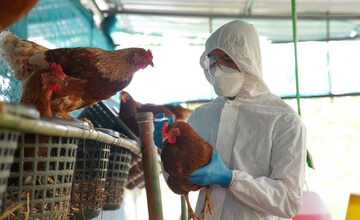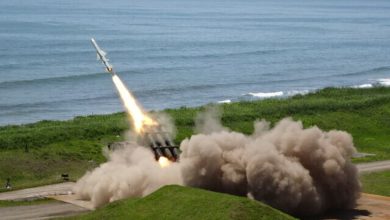Raytheon says rocket-motor squeeze still constrains missile output

PARIS — United States production of some missiles continues to be constrained by a supply squeeze for rocket motors, Raytheon officials said at the Paris Air Show last week.
Raytheon’s naval power unit, which supplies missiles including the SM-2 and SM-6 models as well as the AIM-9X Sidewinder, is still hampered by availability of rocket motors, Barbara Borgonovi, who heads the business, said in a press briefing at the show.
“It’s not just about the constraint for demand today, it’s very much more about the increased demand we see in the future,” Borgonovi said. “We have to have more sources of supply qualified across a number of my programs for rocket motors to be able to reach that increased demand.”
Rocket motors have been a hurdle to ramping up American output of advanced munitions, with industry consolidation in recent decades shrinking the number of domestic suppliers of the key component. Meanwhile, the conflicts in Ukraine and the Middle East have used up thousands of missiles, depleting the stockpiles of the U.S. and its allies.
Missile makers and their suppliers have been looking to grow and diversify production in response, expanding existing capacity or adding entire production lines for rocket motors.
Raytheon is supporting current suppliers, which for many of the programs overseen by Borgonovi is Aerojet Rocketdyne, owned by L3Harris. The executive said Aerojet has been investing and had “a great start in 2025,” supplying as many primary rocket motors by May this year as in all of 2024.
The second part of Raytheon’s rocket-motor strategy is to expand business with a number of existing successful partners, Borgonovi said. The company relies on Norway’s Nammo for the rocket motors that power the AMRAAM air-to-air missile and the Evolved Sea Sparrow Missile, or ESSM.
Rocket motors are not a constraint for AMRAAM production, with a “very healthy” supply chain, said Sam Deneke, the company’s president of air & space defense systems. For ESSM, Nammo “do an incredible job supporting us on that program, not constrained there either,” Borgonovi said.
“So we are looking at extending our sources of supply for many of our programs to established providers,” Borgonovi said. Both Nammo as well as Italy’s Avio, another Raytheon supplier, are establishing U.S. manufacturing sites that will produce rocket motors for U.S. programs, she said.
The U.S. Government Accountability Office in a 2017 report noted that over two decades, the number of U.S. solid rocket motor manufacturers consolidated to two from six, with the number of suppliers also falling.
Meanwhile, in the Red Sea alone, the U.S. Navy and allied navies fired off hundreds of missiles to counter Houthi attacks against shipping since October 2023, while allies have provided Ukraine with thousands of missiles and rockets as it fends of Russia’s invasion.
“We have to be able to ensure that we deliver when it’s needed to the fleet,” Borgonovi said. “So lots of usage, we need to not just replace but we need to scale for the future because of future conflicts, future demand.”
The company is also looking to partners such as Ursa Major and Anduril for new technology and innovative manufacturing and design methods, according to Borgonovi. Raytheon and Ursa Major in December successfully tested a long-range solid rocket motor for the U.S. Army, using additive manufacturing to cut production costs.
Rudy Ruitenberg is a Europe correspondent for Defense News. He started his career at Bloomberg News and has experience reporting on technology, commodity markets and politics.







